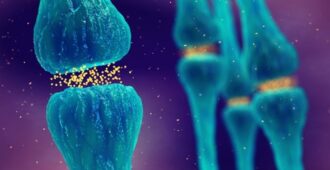Talks on RNA biology are new to the symposium this year as it is the newest puzzle piece to the expanding list of possible cellular causes of MND.
So why is RNA biology important to MND and what is it all about? RNA stands for ‘ribonucleic acid’ and plays a vital role in the creation of proteins that play day-to-day roles in our bodies. Two MND causing genes – TDP-43 and FUS, have been found to have a role in the processing of RNA and so understanding more about the link between these genes and RNA processing is of growing importance in order to find out more about the causes of MND.
So what does RNA processing mean? Our genetic code is over three billion letters long and holds the instructions for how to build everything in our bodies but in this form, it’s nonsense. ‘Editors’ are a type of RNA processers and are needed to copy and ‘tidy’ short sections of code to produce instructions that can then be used to build new proteins. This session was therefore dedicated to our growing understanding of how TDP-43 and FUS may be involved in RNA processing and how this may be affected in MND.
The first talk was given by one of the researchers that we fund– Prof Tom Maniatis from Colombia University in America. In his talk, he gave an enthralling overview of his current study to develop a human ‘in a dish’ model of MND following the success of a recent ‘proof of principle’ study in mice. This new and exciting method of studying live human motor neurones and support cells called ‘glia’ uses stem cell technology to ‘turn back the clock’ on skin cells donated by people living with MND.
In his current study, alongside Prof Chris Shaw from King’s College London and Prof Siddharthan Chandran from Edinburgh University, Prof Maniatis is studying the effect of a ‘sandwich’ of glia and motor neurones on the amount of proteins being made. The preliminary results from the human study have found that there are hundreds of other genes that are found in higher and lower quantities than normal in motor neurones as compared to healthy motor neurones. Of these, a large number are involved with many different processes that are known to be involved with the degeneration of motor neurones. These findings are still preliminary as the study is ongoing – but it’ll certainly be interesting to find out more in the future!
As the session continued, we heard from a number of speakers who are also working to find out how TDP-43 is involved with RNA processing and how this causes motor neurones to degenerate.
The ‘take home’ message from these talks is that we are learning more about what TDP-43 interacts with through its role in RNA processing, and we are now moving closer to learn how it can cause MND.





